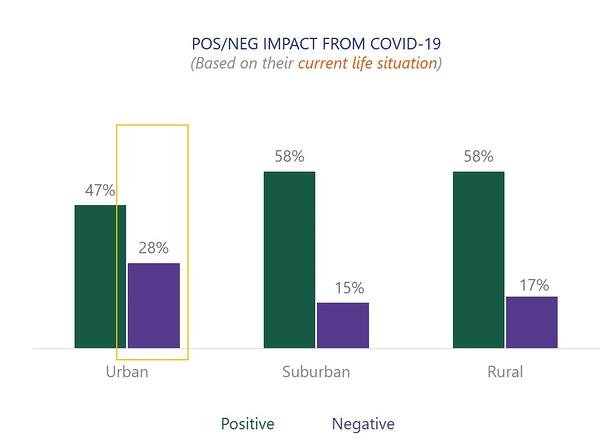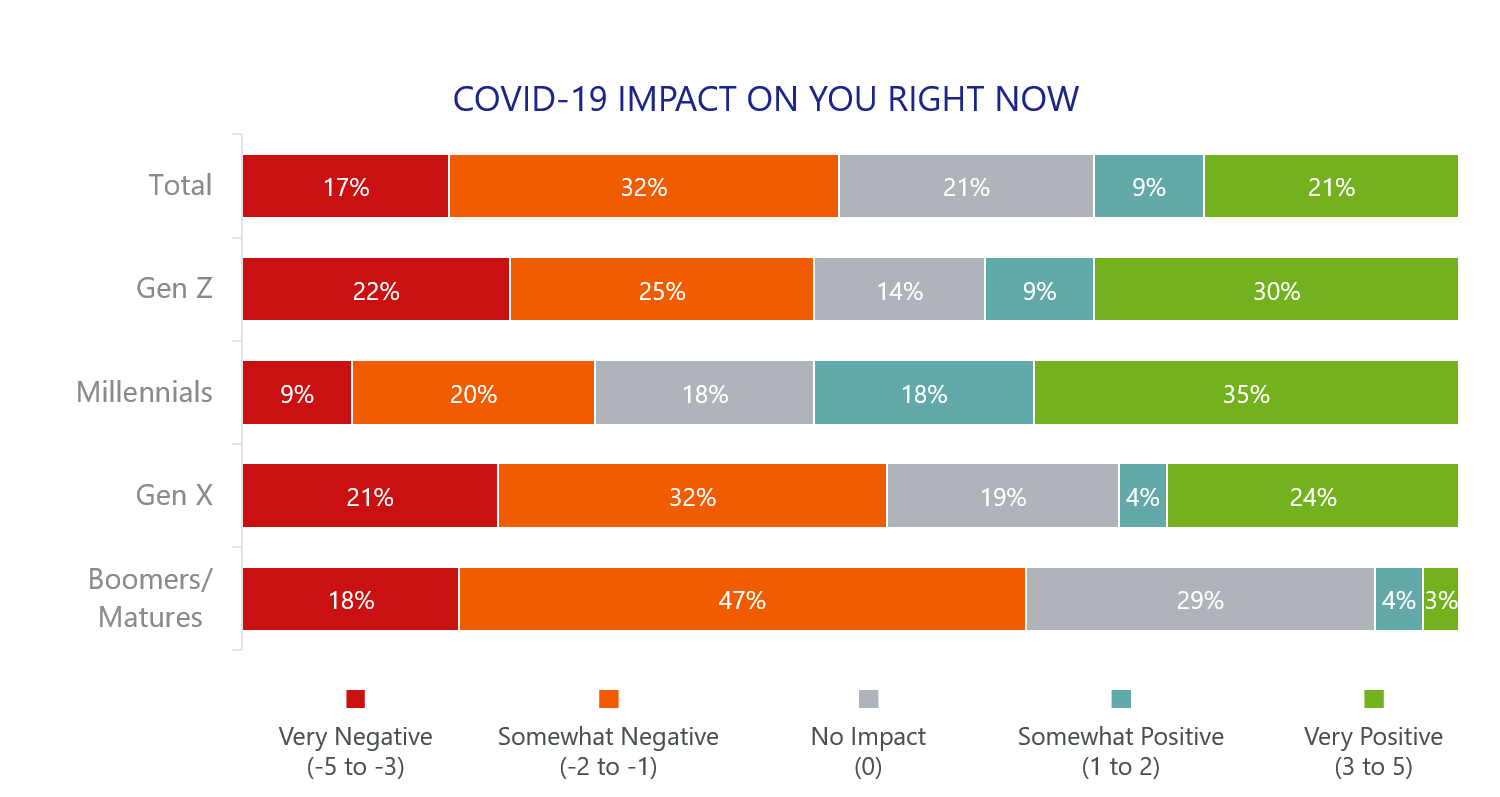It’s about a 6 min. read.
As someone who has been deeply involved with the art and science of segmentation for over 20 years, I am an ardent believer that the most insightful story in any data set is found at the segment level. The fact is that examining the total population (whatever that study’s population is) washes away the “aha” moments. My much-smarter colleague, Jay Weiner (Ph.D) constantly reinforces that any total column is usually made up of some multimodal distribution, and our job as researchers is to track down and highlight the key ones.
Finding those stories usually requires sophisticated segmentation analytical techniques (e.g., Latent Class and k-means, clustering, C&RT modeling, BayesNets and Ensemble) to coerce the data into sharing its news. Only occasionally, the data shouts its own news loudly when examining a few simple cross tabs.
In the case of CMB’s recent self-funded research on how Covid-19 is impacting US consumer sentiment, our baseline wave from two weeks ago revealed (practically shouted) some obvious differences in the data based on region, age, and the sources people trust to communicate honestly. And while I typically love to find stories in data with such little sweat, this discovery was far more bitter than sweet given the seriousness of the topic.
For example, it is clear that even as of two weeks ago, Americans living in urban areas were much more likely to be feeling negative emotions related to their lives (independent of COVID-19) than their suburban or rural counterparts.

On slide 16 of the report, we break out much of the study’s data by generational cohort. The top right data from the slide that I’m showing below is a summary of the impact that each generation perceived that COVID-19 was having on their lives right now (“now” being around 3/18). Millennials were feeling on average (note: there are multi-modal distributions underneath these cohorts, they definitely don’t all feel the same) that COVID-19 was having a more positive than negative impact on their lives. Boomers and Matures on the other hand, were feeling far more negative impacts than positive. 
I know what many of you must be thinking: how can anyone say that a disease that had already claimed thousands of lives by the time this was fielded has had a positive impact on their lives? I can’t say for sure, but I have some theories:
Additionally, there appears to be a relationship between the brands/sources individuals trust to communicate honestly, and how concerned they are (or “were” as 3/19) about COVID-19. Big caveat that the sample sizes get thin here, but directionally these word clouds (from slide 15) that segment people based on whether they feel COVID-19 is having a negative/neutral/positive impact on their lives reveal that:
In most cases, I’d be celebrating about how easy and clear these key findings were to find. Typically, at this point, I’d be discussing implications and recommendations with my clients regarding how they might change aspects of their business to capitalize on opportunities that serve their customers and the broader market more effectively with better marketing and/or better products/experiences. And I’d probably be slightly wistful about how long these changes would likely take to implement, and how imperfectly we’d be able to measure the impact (ROI) of strategic segmentation initiatives, given how much both the element of time, and the hundreds of other changes they make to their business over time confounds precise quantification.
Sadly, in this situation, none of those problems mentioned above are materially present, or (if they are) meaningfully important. I read this article from CNN a couple days ago, which reinforces the glimmers we saw in our study about the dire circumstances urban areas face.
I’m sure everyone reading this knows that COVID-19 is here, and getting worse every day. We are about to field a second wave of this study, and I know that sentiment is going to change, but I am not sure by how much. Just like I am confident about the very substantial impacts that CMB’s segmentation work has had on our clients over time, even if I can’t precisely quantify it, I know the same is true about social distancing and sheltering in place.
CMB is committed to (but not necessarily “looking forward to”) sharing results from our research on this topic as we track sentiment over time. In the meantime, please stay safe and healthy.